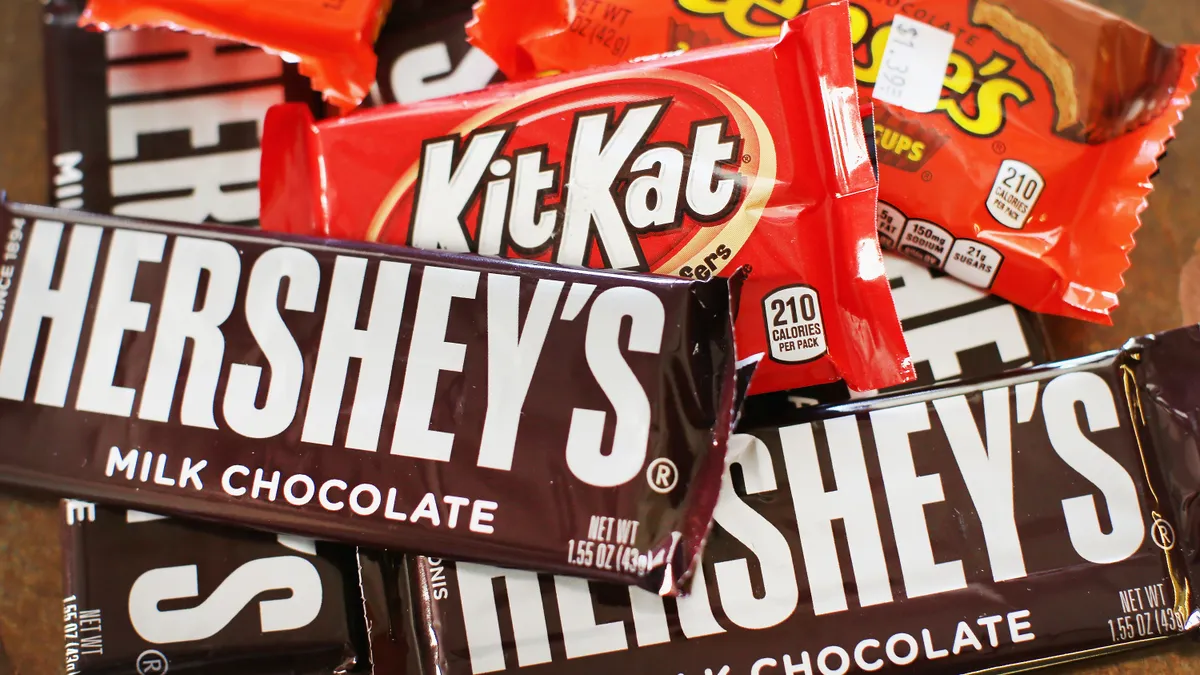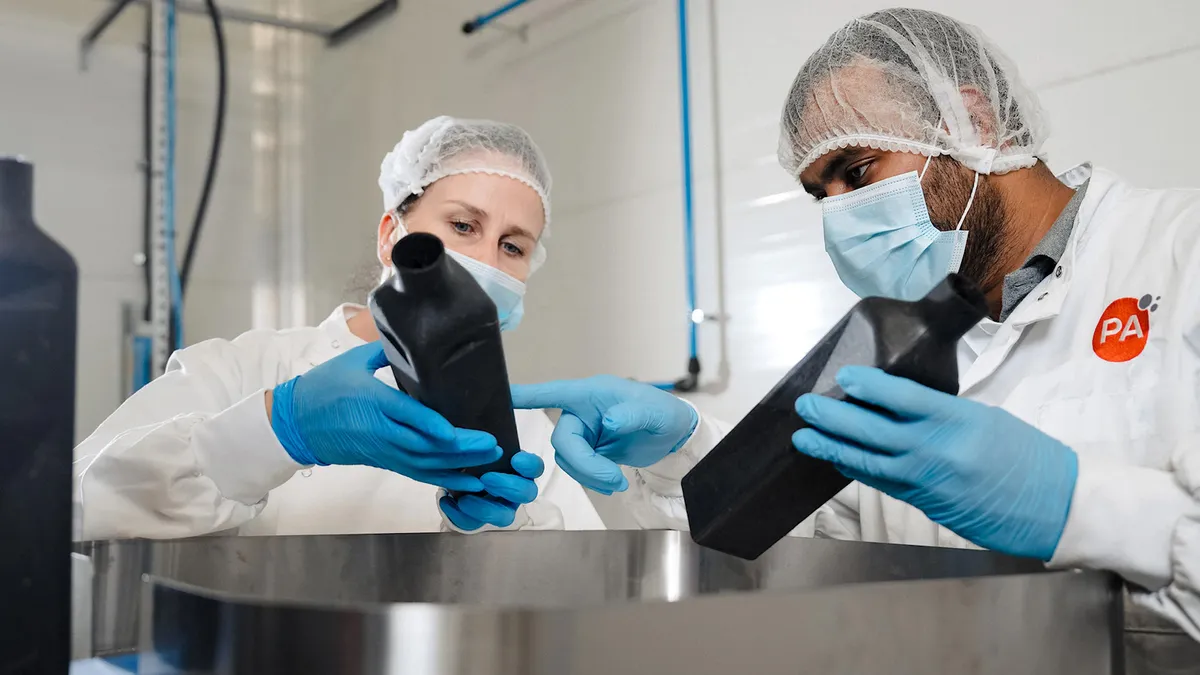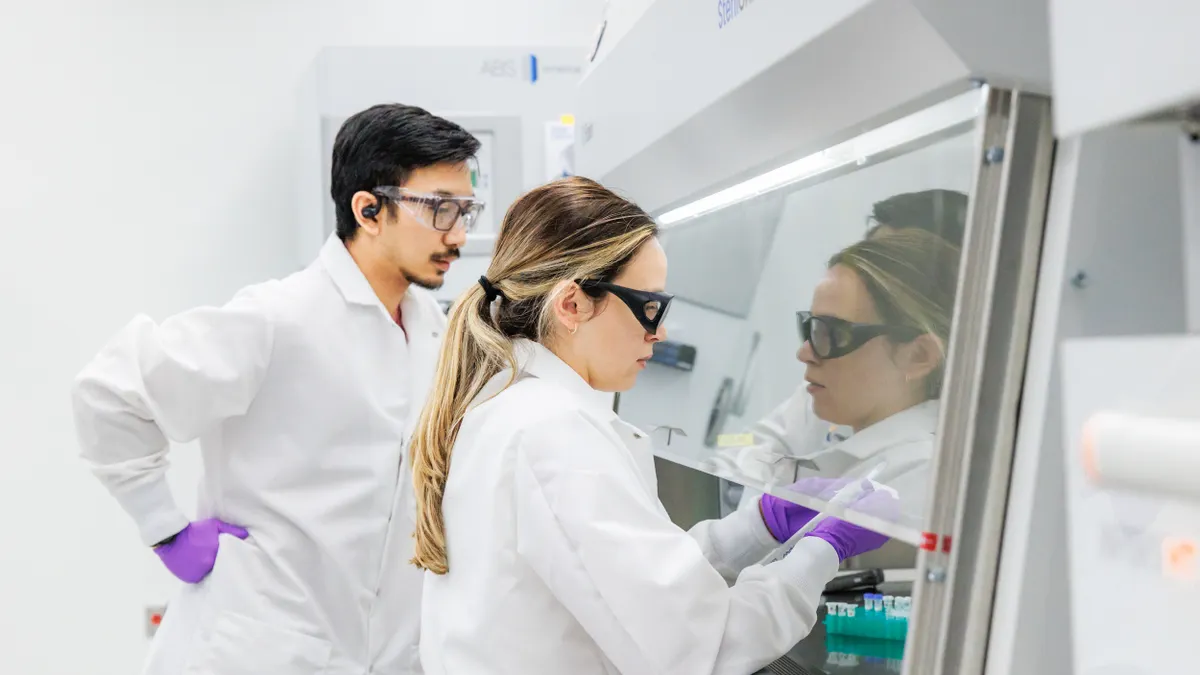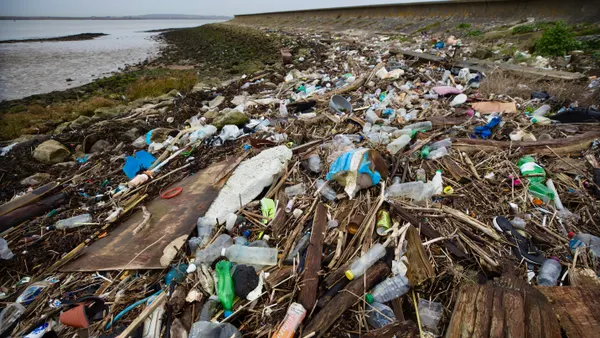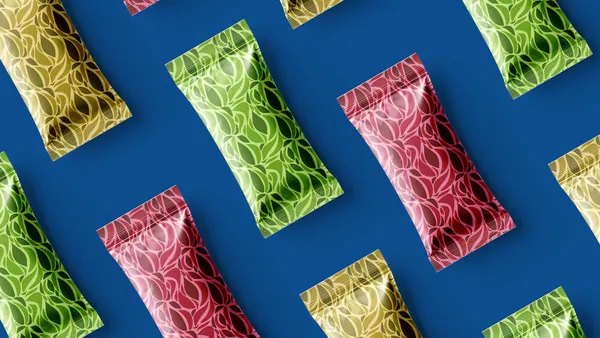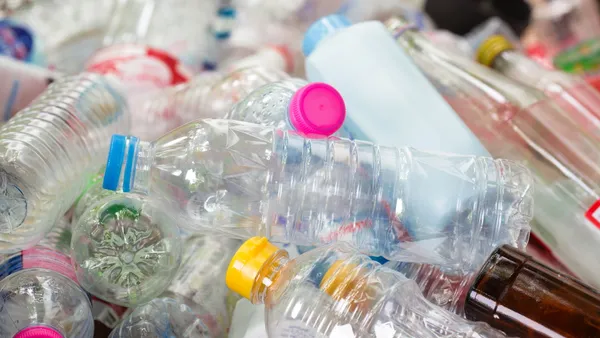Dive Brief:
- Hershey said it is advancing efforts to reduce and reformulate packaging, but noted in its 2022 ESG report released last week that it faces ongoing challenges with recyclability and incorporating recycled content. Packaging in North America that is post-consumer recycled material totaled 32% in 2022, up from 31% in 2021 and 22% in 2020.
- The Pennsylvania-based chocolate and cocoa products company said it’s currently “hindered by an insufficient reliable supply of food grade material due to limitations in infrastructure, reclaim, sorting and processing.” It also said that as infrastructure evolves, “we will consider the best target-setting and reporting approach.”
- Hershey is aiming for all of its plastic packaging to be recyclable, reusable or compostable by 2030. Its rate in 2022 among North American-made products was 17%. After eliminating 25 million pounds of packaging by 2020, which Hershey said was five years ahead of schedule, it’s now working to eliminate an additional 25 million pounds of packaging by 2030, a target it embarked on in 2021, with 2022 progress at 13.7 million pounds.
Dive Insight:
Going forward, Hershey says it’s focusing on eliminating certain “non-value added” materials, improving circularity via design, and enhancing transparent and educational labeling.
Peers in the candy, mint and gum space have similar endeavors to make their packaging more sustainable. Category leader Mars, for example, last year worked with Berry Global to launch candy jars for bulk M&M, Starburst and Skittles products formulated with 15% recycled plastic.
Such rigid containers are also where Hershey has been able to achieve some recyclability. The 17% of Hershey’s plastic packaging from North American-made products that the company considers recyclable are syrup bottles and caps, as well as other PET jars and pails. Hershey touts its redesigned chocolate syrup multipack carriers made from 100% postconsumer recycled content. As for reducing hard-to-recycle materials, Hershey said it is “near completion to eliminating hard-to-recycle PVC” from its global packaging portfolio.
Still, when it comes to candy, flexible wrappers are ubiquitous. Mars has tried paper wrappers for candy bars in Australia and, as of this week, in the U.K. Mondelēz International has incorporated 30% recycled plastic in packaging for certain Cadbury products; Amcor supplies the packaging. Like Hershey, Mondelēz said securing sufficient volumes of food-grade recycled plastic packaging “was a challenge involving significant resources and collaboration with many external suppliers throughout the value chain,” per its latest ESG report, also released in May.
As part of its efforts to improve recycling, Hershey says that over the next several years it’s making “significant investments to qualify and convert over 2,000 items across all of our manufacturing facilities to new packaging with updated labeling that will educate consumers on its recyclable components.”
Packaging contributes to 11% of Hershey’s Scope 3 emissions. The company says that eliminating unnecessary packaging and increasing the proportion of sustainable materials are important factors in reducing Scope 3 emissions. Hershey is targeting a 25% absolute reduction in Scope 3 emissions by 2030 from a 2018 baseline; it was at 10% in 2022. It’s also trying to improve distribution efficiency and decrease the number of trucks on the road, thereby reducing secondary and transport packaging. Hershey is closer to achieving its Scope 1 and 2 emissions reduction goal, at 41% progress on a 50% reduction goal by 2030 from a 2018 baseline.
Hershey lists pulp and paper packaging as a “priority ingredient.” The company says that as of 2020, all of its pulp and paper sourced for products in U.S. and Canada operations come from recycled material or certified mills. It’s working to extend that globally by 2025.



